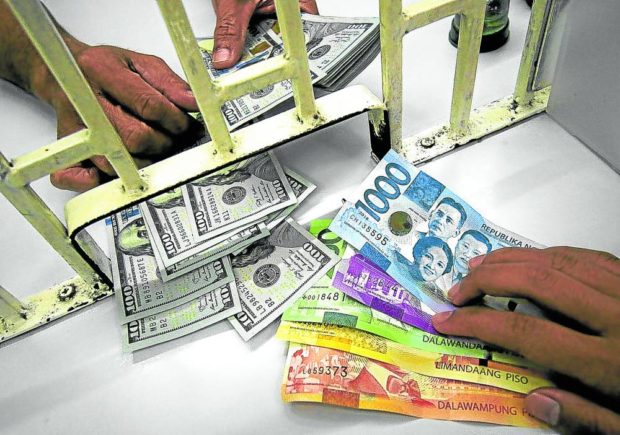US economic woes boost peso to 3-month high
MANILA -The exchange rate between the Philippine peso and the US dollar sank below the 56:$1 threshold after three months above this, at a time of the year when the greenback is usually weak and inbound remittances are heavier.
The peso closed the day at 55:91:$1 after opening at 55.80:$1. On Monday, the local currency traded at as strong as 55.73 and as weak as 55.91 against the American currency.
Also, the peso was not seen below 56:$1 since closing at 55.74:$1 last Aug. 4.
According to ING Bank, the foreign exchange market started this month of November with a correction, harking back to “November 2022 [which] was a historically negative month for the dollar.
However, The Netherlands-based group said in a commentary that it may be too early to see the deterioration in US economic activity that would be necessary to drag the American currency sustainably lower.
Robert Dan Roces, chief economist at Security Bank Corp., said appreciation of the peso against the US dollar happened in the wake of the release of weaker-than-expected data on US nonfarm employment and manufacturing activities.
Seasonal remittances
Roces said other factors that pushed the peso-dollar exchange rate were seasonal inflows of remittances as well as policy signals from the US Federal Reserve and the Bangko Sentral ng Pilipinas (BSP).
Over the past two weeks, the BSP announced an off-cycle policy rate hike of 0.25 percentage point to 6.5 percent while the US Fed made no changes in the federal funds rate.
End of cycle
DBS Bank in Singapore thinks that the latest decision of the US Fed and latest data flow suggest the rate hike cycle is most likely over.
“This development will provide much-needed respite to Asia’s currency and bond markets,” DBS said.
Michael Ricafort, chief economist at Rizal Commercial Banking Corp., said the currency exchange rate also fell to three-month lows in parallel with movements of global crude oil prices.
Ricafort said the US dollar was also weakening partly due to US Treasury yields easing down to their lowest levels in the past three weeks.
“The peso is also stronger due to the recent long holiday weekend with accumulated [inflows of] remittances and anticipation of upcoming remittances for the holiday season,” he added.
Data from the BSP show that money transfers sent through banks increased by 2.8 percent to $21.58 billion in the January-August period this year from $20.99 billion in the same period last year.
BMI Country Risk and Industry Research observed that the growth in remittances to the Philippines was stable as the demand for overseas Filipino workers continued to increase globally.
“However, we do highlight several risks to this income over 2023, mostly related to the negative impact from the rising inflation across several global markets,” BMI said. INQ

